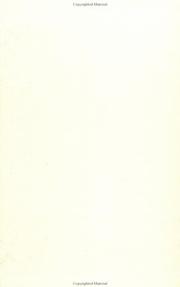| Listing 1 - 2 of 2 |
Sort by
|

ISBN: 1283843285 1136072586 0203446178 9781136072581 9781283843287 0415944031 9780203446171 9780415944038 9780203446171 9781136072666 1136072667 Year: 2002 Publisher: New York, N.Y. Routledge
Abstract | Keywords | Export | Availability | Bookmark
 Loading...
Loading...Choose an application
- Reference Manager
- EndNote
- RefWorks (Direct export to RefWorks)
The late medieval sukiya tea-house is recognised by scholars and architects as the precursor for the modern and contemporary Japanese architectural tradition. This form is also seen to have contributed significantly to aspects of Western architectural tradition. The daime style is possibly the most distinctively 'Japanese', enigmatic and oldest form located within the sukiya tradition. The work examines the Shoko-ken tea-house, built in 1628, at the Koto-in temple in the precincts of Daitoku-ji monastery in Kyoto. The Shoko-ken is one of the few remaining extant constructions of its type da
Chashitsu (Japanese tearooms) --- Architecture, Sukiya --- Architecture --- History
Book
ISBN: 0834815117 Year: 1978 Publisher: New York Weatherhill
Abstract | Keywords | Export | Availability | Bookmark
 Loading...
Loading...Choose an application
- Reference Manager
- EndNote
- RefWorks (Direct export to RefWorks)
J6500 --- J6008.80 --- J6540 --- Architecture --- -Architecture --- -Architecture, Sukiya --- Sukiya architecture --- Architecture, Western (Western countries) --- Building design --- Buildings --- Construction --- Western architecture (Western countries) --- Art --- Building --- Japan: Art and antiquities -- architecture --- Japan: Art and antiquities -- history -- Gendai (1926- ), Shōwa period, 20th century --- Japan: Art and antiquities -- architecture -- architectural design and plans --- Designs and plans --- Design and construction --- Architecture, Sukiya. --- Architecture, Sukiya --- Architectural designs --- Designs, Architectural --- Architectural drawing --- Architecture, Modern --- History
| Listing 1 - 2 of 2 |
Sort by
|

 Search
Search Feedback
Feedback About UniCat
About UniCat  Help
Help News
News